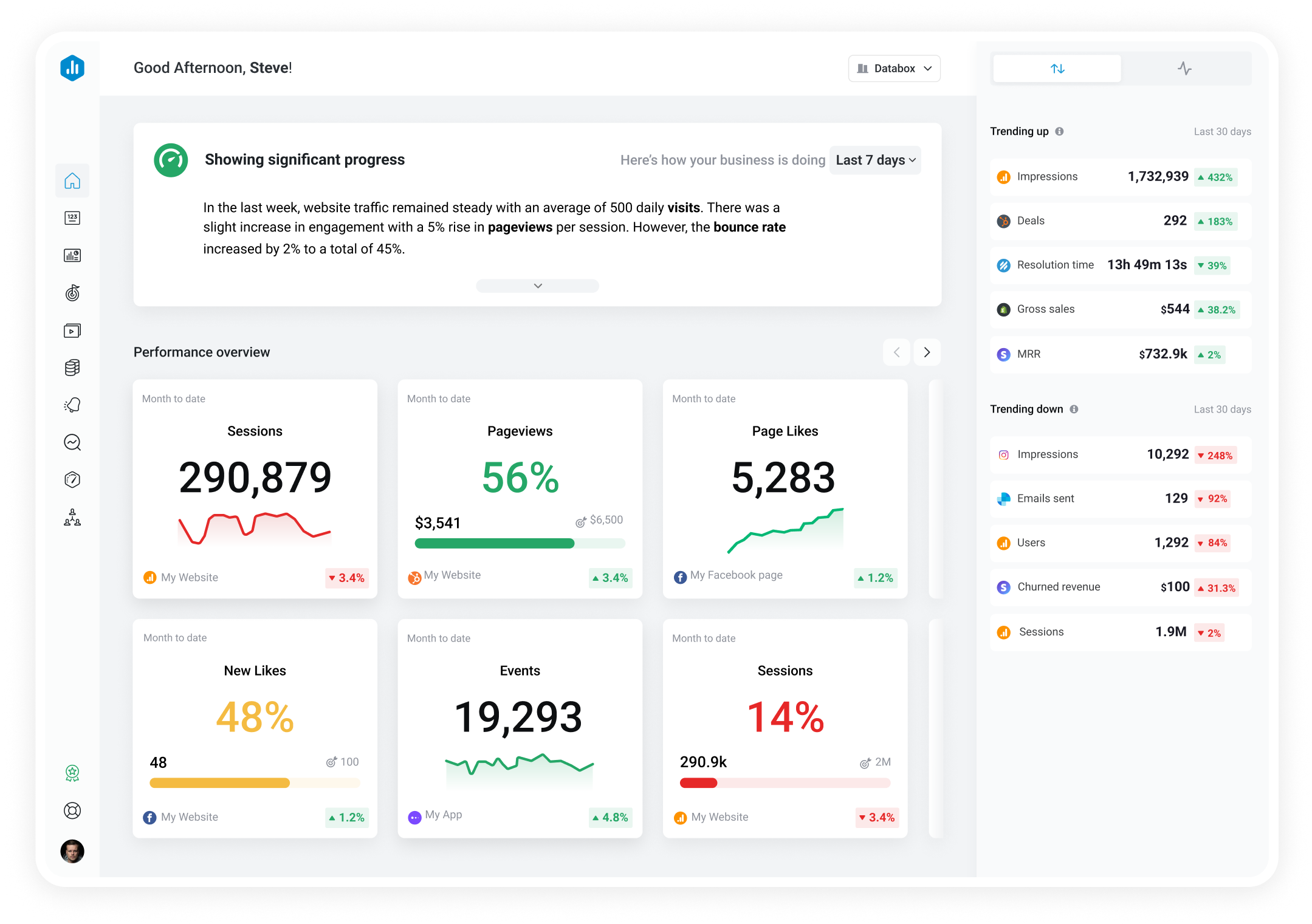Track all of your key business metrics from one screen
GET STARTED
 Stripe
ARR (excl. Canceled Subscriptions)
Stripe
ARR (excl. Canceled Subscriptions) ARR (excl. Canceled Subscriptions) stands for Annual Recurring Revenue excluding Canceled Subscriptions, a metric that calculates the total amount of revenue a SaaS company generates from its recurring subscription fees in a given year. It's a key metric to measure the growth and predict the future revenue of a SaaS business.
With Databox you can track all your metrics from various data sources in one place.
Annual Recurring Revenue (ARR) is a financial metric commonly used by businesses with a recurring revenue model to measure the predictable and recurring revenue they generate through subscription-based products over a 12-month period.
The metric is popular across all industries with a subscription-based model, as it provides a snapshot of financial health and growth potential.
ARR is often used in conjunction with other KPIs like customer acquisition cost (CAC), customer lifetime value (CLTV), and churn rate.
To calculate ARR, you need first to determine your business’s average monthly recurring revenue (MRR) and then multiply it by 12 to represent a full year.
This isn’t the only formula you can use, but it’s the most common one.
Here’s how it goes:
Annual Recurring Revenue (ARR) = Monthly Recurring Revenue (MRR) * 12
Let’s break down the elements here.
MRR is the average monthly revenue generated by all active subscribers or customers. To calculate MRR, sum up the revenue generated from each customer on a monthly basis.
Say you run a SaaS company and have the following monthly revenue from subscriptions over the past three months:
To calculate the MRR, add up the revenue from each month and divide by the number of months:
MRR = (10,000 + 12,000 + 11,500) / 3 = $11,500
Now, to calculate the ARR, multiply the MRR by 12:
ARR = $11,500 * 12 = $138,000
So, the Annual Recurring Revenue (ARR) for your company would be $138,000 based on the given monthly revenue data.
It’s important to note that ARR calculations assume a constant revenue stream without accounting for any fluctuations or changes in customer subscriptions.
Additionally, this calculation does not consider expansion revenue from upsells, cross-sells, or additional one-time fees.
There are a lot of different factors that influence a company’s ideal ARR, but the two main ones are the specific industry and the stage of the company.
For example, subscription-based businesses in ecommerce and healthcare technology typically consider a 30-40% growth rate healthy. On the other hand, SaaS companies usually aim for annual growth rates of 50% to 100%, depending on their size and maturity. For example, early-stage startups experience higher growth rates during the initial part of establishing a customer base – somewhere around 100% or more per year is not uncommon to see in startups.
Established SaaS businesses with a significant market have slower but steadier growth rates of around 30% to 50% per year.
Remember that these benchmarks are general guidelines and can vary greatly for your specific business.
Increasing the annual recurring revenue in your business boils down to three main things – customer acquisition, retention, and expansion.
To help you approach them properly, we compiled some of the best tips and strategies we got from industry experts over the years:
More resources to help you improve:

Used to show a simple Metric or to draw attention to one key number.

Used to illustrate numerical proportions through the size of the slices.

Used to show comparisons between values.
Databox is a business analytics software that allows you to track and visualize your most important metrics from any data source in one centralized platform.
To track ARR (excl. Canceled Subscriptions) using Databox, follow these steps:
 Goals
Goals Scorecards
Scorecards Metric Digest
Metric Digest Metric Builder
Metric Builder Data Calculations
Data Calculations Performance Screen
Performance ScreenThe main difference between MRR and ARR lies in the time frame they represent.
MRR refers to the average monthly revenue generated by customers, giving insight into the short-term revenue stream.
ARR, on the other hand, represents the total revenue expected from subscriptions over a full year, providing a more long-term view.
Companies use ARR to measure company growth, investigate the success of their subscription model, and make better revenue forecasts.
The Annual Recurring Revenue (ARR) model is particularly relevant for businesses that operate on a subscription-based or recurring revenue model, such as SaaS companies, subscription box services, and membership-based businesses.
